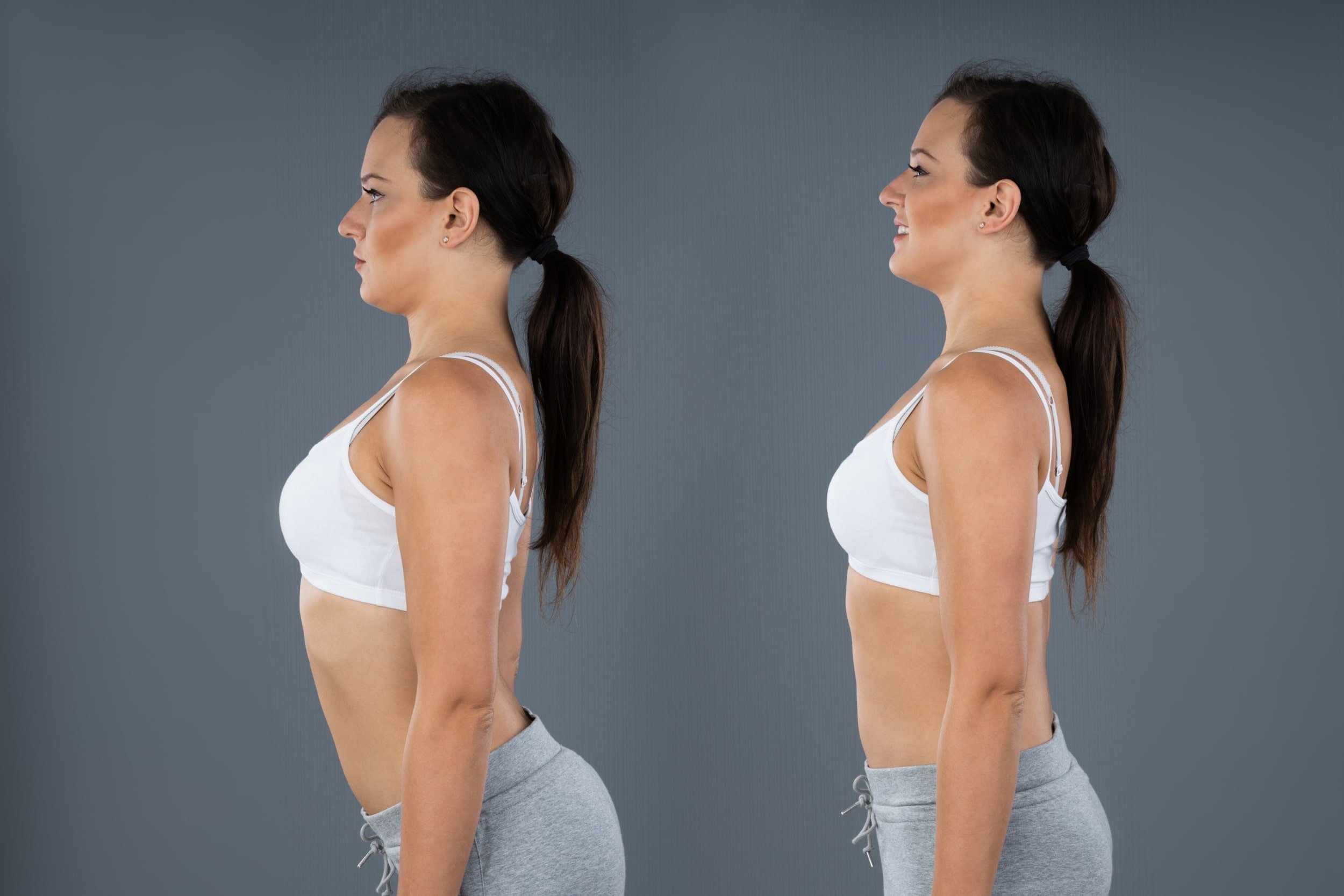
Lower Cross Syndrome
Relieve hip, back & leg pain with Remedial Massage
What is Lower Cross Syndrome?
Lower Cross Syndrome (LCS) is a common postural imbalance characterized by tight hip flexors and lower back muscles, coupled with weak abdominal and gluteal muscles. This imbalance often results from prolonged periods of sitting or a sedentary lifestyle, leading to chronic pain and discomfort in the lower back, hips, and pelvis. At CloudForm Massage, our skilled massage therapists are experienced in addressing the underlying causes of Lower Cross Syndrome, providing effective relief and promoting better posture.
What Causes Lower Cross Syndrome?
The primary cause of Lower Cross Syndrome is muscle imbalances that develop over time due to poor posture, sedentary lifestyle, or inadequate physical activity. When certain muscles become tight and overactive, they can pull the pelvis and spine out of alignment, leading to pain and discomfort. Common factors contributing to the development of Lower Cross Syndrome include:
Prolonged sitting: Spending long hours in a seated position can cause hip flexor and lower back muscles to tighten, while abdominal and gluteal muscles become weak and lengthened.
Poor exercise habits: Focusing too much on specific muscle groups or neglecting core and gluteal muscles during workouts can contribute to muscle imbalances.
Inadequate stretching and mobility work: Neglecting to stretch and mobilize tight muscles can exacerbate muscle imbalances and worsen symptoms of Lower Cross Syndrome.
What Do the symptoms of lower cross symptoms Feel Like?
Lower Cross Syndrome is characterized by several common symptoms, including:
Chronic lower back pain: Tight lower back muscles and weak abdominal muscles can contribute to persistent pain in the lower back region.
Hip pain and stiffness: Tight hip flexors can lead to discomfort and limited mobility in the hips.
Pelvic tilt: An anterior pelvic tilt occurs when the front of the pelvis drops, and the back of the pelvis rises, causing increased curvature of the lower spine.
Poor posture: Individuals with Lower Cross Syndrome often exhibit a "swayback" posture, with an exaggerated curve in the lower back and a protruding abdomen.
Limited range of motion: Tight hip flexors and lower back muscles can restrict movement in the hips and spine, making it difficult to perform certain activities or exercises.
Massage therapy is an effective approach to addressing the muscle imbalances associated with Lower Cross Syndrome. By targeting tight muscles and promoting relaxation, massage can help alleviate pain, improve range of motion, and support better posture. At CloudForm Massage, our experienced therapists use a variety of techniques to address the specific needs of clients with Lower Cross Syndrome, including:
Myofascial release: This technique involves applying gentle, sustained pressure to the connective tissue surrounding muscles, helping to release tension and improve flexibility in tight hip flexors and lower back muscles.
Deep tissue massage: By applying deep pressure to the muscles and connective tissue, deep tissue massage can help break up adhesions and scar tissue, promoting relaxation and improved range of motion.
Trigger point therapy: This technique involves applying targeted pressure to specific "knots" or tight areas within the muscles, helping to release tension and alleviate pain.
Stretching and mobilization: Our massage therapists incorporate stretching and mobilization techniques to help improve flexibility and range of motion in the hips and lower back, making it easier to maintain proper posture and prevent future imbalances.
How Massage Therapy Addresses Lower Cross Syndrome
What are some of the benefits by seeking remedial massage?
At CloudForm Massage, our skilled therapists understand the complexities of Lower Cross Syndrome and are dedicated to providing effective, personalized treatment plans for each client. By choosing massage therapy at CloudForm Massage, clients can experience a range of benefits, including:
Pain relief: Massage can help alleviate chronic pain in the lower back, hips, and pelvis associated with Lower Cross Syndrome by targeting tight muscles and promoting relaxation.
Improved range of motion: By addressing muscle imbalances and promoting flexibility, massage therapy can help improve range of motion in the hips and lower back, making daily activities and exercises more comfortable.
Enhanced posture: Massage therapy can help correct the muscle imbalances that contribute to poor posture, supporting a healthier alignment of the spine and pelvis.
Reduced risk of injury: By addressing muscle imbalances and promoting better posture, massage therapy can help reduce the risk of injury, particularly in the lower back and hips.
Stress reduction: Massage therapy is well known for its ability to promote relaxation and reduce stress, which can be particularly beneficial for individuals experiencing chronic pain and discomfort due to Lower Cross Syndrome.
Customized Treatment Plans for Bursitis Relief
At CloudForm Massage, our expert massage therapists understand that each individual's experience with Lower Cross Syndrome is unique. We take the time to assess your specific needs and develop a personalized treatment plan designed to target the root causes of your pain and discomfort. Through a combination of massage techniques, stretches, and strengthening exercises, our customized treatments can help restore balance to your muscles, improve your posture, and alleviate pain.
Long-term Benefits of lower cross syndrome Management
When you incorporate massage therapy into your regular self-care routine, we can provide long-term benefits for individuals suffering from Lower Cross Syndrome. Some of these benefits include:
Improved Posture: Regular massage therapy can help to correct muscle imbalances, which can contribute to better posture and reduced strain on the lower back and pelvis.
Reduced Pain and Discomfort: By targeting tight muscles and strengthening weak muscles, massage therapy can help alleviate pain and discomfort associated with Lower Cross Syndrome.
Increased Mobility: Massage therapy can help improve flexibility and range of motion in the hips and lower back, which can lead to increased mobility and function.
Enhanced Physical Performance: Regular massage therapy can help to improve your overall physical performance in daily activities and athletic pursuits by addressing muscle imbalances and promoting proper body mechanics.
Prevention of Future Issues: By addressing the underlying causes of Lower Cross Syndrome, regular massage therapy can help to prevent future occurrences of pain and dysfunction.
Why Choose Us to help you?
Read some of our amazing reviews by hundreds of beloved clients
Experienced, Professional, Therapeutic.
Don't let Lower Cross Syndrome keep you from living a pain-free, active life. At CloudForm Massage, our skilled massage therapists are dedicated to helping you overcome the challenges associated with this condition. With our customized treatment plans, we can provide effective, lasting relief and empower you to take control of your health and well-being. Don't wait – book your appointment at CloudForm Massage today and experience the difference our personalized approach can make in your journey towards optimal wellness.

Improve your posture & relieve the pain
FAQ About Lower Cross Syndrome
Q1: What causes Lower Cross Syndrome? A1: Lower Cross Syndrome is caused by a combination of tight and weak muscles in the lower back, hips, and pelvis, often resulting from prolonged sitting, poor posture, or imbalanced exercise routines.
Q2: How can massage therapy help with Lower Cross Syndrome? A2: Massage therapy can help by targeting tight muscles, promoting relaxation, and providing guidance on strengthening exercises to correct muscle imbalances and improve posture.
Q3: How long does it take to see results from massage therapy for Lower Cross Syndrome? A3: The timeline for results can vary depending on the individual and the severity of the condition. Some people may experience relief after a single session, while others may require multiple sessions to see significant improvements.
Q4: How often should I receive massage therapy for Lower Cross Syndrome? A4: The frequency of massage therapy sessions will depend on your specific needs and the severity of your condition. Your massage therapist will work with you to develop a treatment plan tailored to your unique situation.
Q5: Are there any self-care tips I can follow to help with Lower Cross Syndrome? A5: Yes, incorporating regular stretching, strengthening exercises, and maintaining proper posture can help alleviate symptoms and prevent future occurrences of Lower Cross Syndrome.
Q6: Can massage therapy be combined with other treatments for Lower Cross Syndrome? A6: Yes, massage therapy can be a valuable component of a comprehensive treatment plan that may also include physiotherapy, chiropractic care, and other complementary therapies.
Q7: Is massage therapy safe for individuals with Lower Cross Syndrome? A7: Yes, massage therapy is generally considered safe for individuals with Lower Cross Syndrome when performed by a qualified and experienced therapist
What Else Can Help Lower Cross Syndrome?
In addition to massage therapy, several other treatment strategies can be beneficial in addressing Lower Cross Syndrome. These approaches can be used in conjunction with massage for a comprehensive and effective treatment plan:
Exercise and strength training: Focusing on strengthening weak abdominal and gluteal muscles, while also incorporating stretching exercises for tight hip flexors and lower back muscles, can help correct muscle imbalances and alleviate symptoms.
Postural education: Learning how to maintain proper posture throughout the day, both while sitting and standing, can help prevent the development of muscle imbalances and reduce the risk of Lower Cross Syndrome.
Ergonomic assessments: Ensuring that your work and home environments are set up ergonomically can help minimize the stress on your lower back and hips, promoting better posture and reducing the risk of Lower Cross Syndrome.
Pilates and yoga: Both Pilates and yoga can be effective in improving core strength, flexibility, and overall posture, making them excellent complementary therapies for individuals with Lower Cross Syndrome.
Physiotherapy if pain is persistent or continues to increase in severity despite adjustment. It may be beneficial to get further assessment done by professionals.
Book With CloudForm Massage Today & Experience Our Difference.
We Look Forward to Seeing You!

